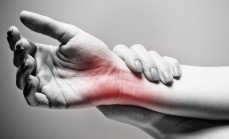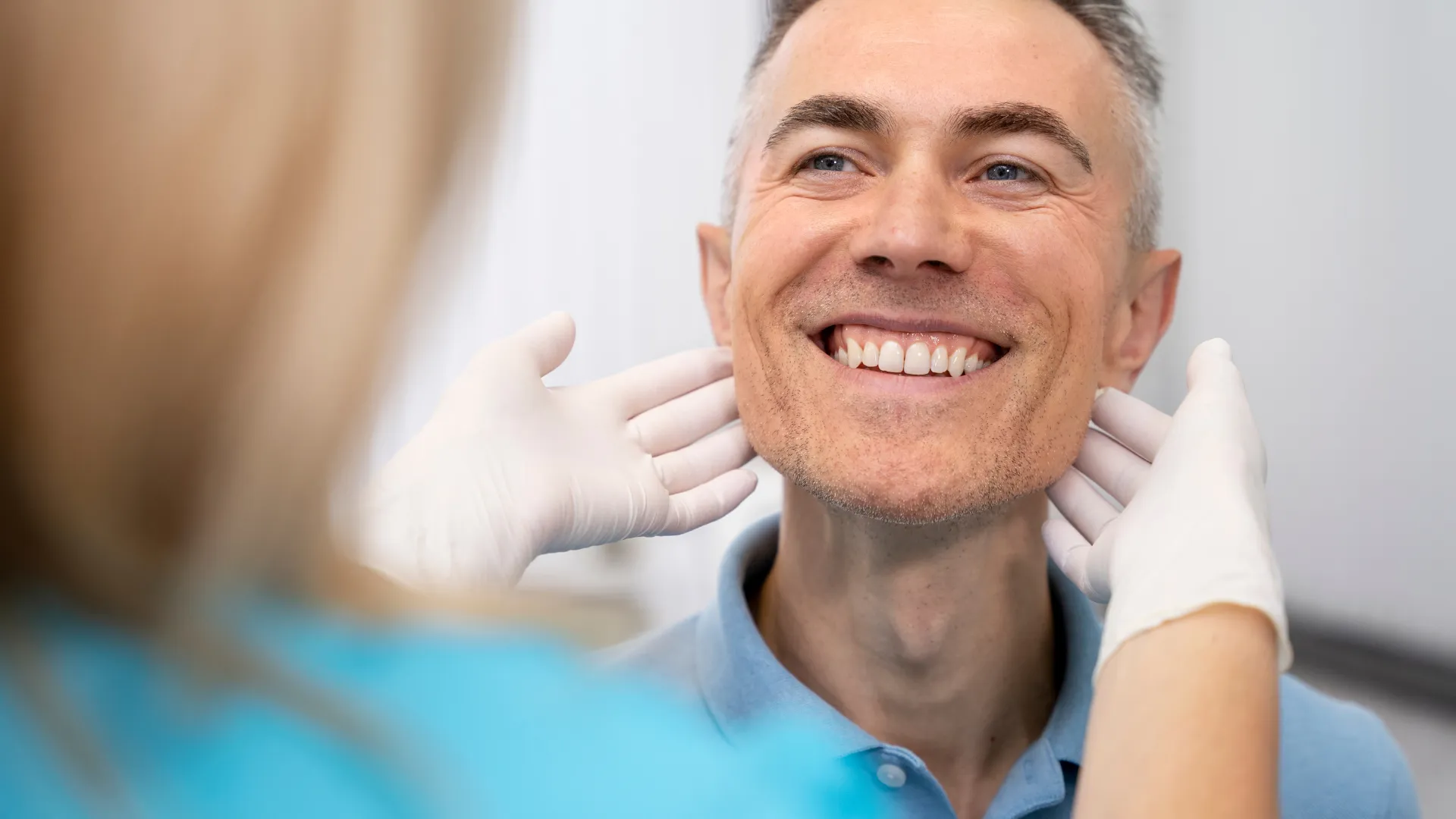it is clear for most of us that the hands and wrists are one of the most used parts of our body. Our hands help us cook, work and even make music and art. When our hands and wrists start to frustrate us, the problems start. Below are the most common hand and wrist disorders that may require hand surgery. It is possible to summarize some conditions in this way: Carpal Tunnel Syndrome, Trigger Finger, Basal Joint ( Thumb) Arthritis, Ganglion Cysts, and Hand and Wrist Traumas.
Carpal Tunnel Syndrome
What is Carpal Tunnel Syndrome?
Carpal tunnel syndrome occurs when the transverse carpal ligament (TCL) narrows or presses on the median nerve that runs down the arm and hand. This condition is caused by compression of the TCL on the part of the median nerve that attaches from the base of the wrist to the hand. It causes numbness and tingling in the thumb side of the hand but over time the compression becomes constant and causes loss of sensation and even weakness in the thumb muscle.
In the early stages of carpal tunnel syndrome, the doctor may prescribe an overnight device or oral steroids as treatment. Corticosteroid injections into the carpal tunnel can also provide relief. If pain and weakness persist, surgery is usually the next step. The surgery involves cutting the transverse carpal ligament, which runs like a band across the wrist, followed by an incision at the base of the palm to free the median nerve from compression. After the surgery, the symptoms disappear quickly, but the full recovery time is 6 months.
Who is at Risk for Carpal Tunnel Syndrome?
Researchers believe that genetics is the most influential factor in this hand condition. However, early evaluation and diagnosis prevents the condition from worsening. Carpal tunnel syndrome is more common in women and the elderly people. Those working in areas subject to frequent vibrations and impacts to the hands may be at increased risk.
How Can You Help Prevent Carpal Tunnel Syndrome?
- Do not sleep in positions that can cause your wrists to bend and twist.
- Correct your posture where you work. Try using a wrist pad for your mouse and keyboard and adjusting your chair to a height that suits you.
- Work by taking breaks in repetitive activities such as lifting objects or writing.
- Try to stretch your hand, wrist, and fingers every hour.
- If you feel pain, apply cold ice to your wrists.
Trigger Finger
What is Trigger Finger?
Flexor tendons extend from the forearm muscles into the palm to move the fingers. In the palm of the hand, the tendon works like a thread running through the rings of a thread under a pulley system. When this entry point is irritated, it causes inflammation and thickening, causing the rim to close. As the tunnel narrows, friction on the tendon causes a lump (mass) that grips the tendon and prevents it from slipping. This causes the finger to lock into a crease position otherwise known as the trigger finger.
Surgery is not always the first solution for this condition. It can usually be treated with up to three injections.
Who are at risk for Trigger Finger?
- Trigger Finger is more common in women.
- Patients with diabetes and rheumatoid arthritis are at higher risk.
- Repeated or prolonged gripping can increase your risk of Trigger Finger. This may apply to those who lift heavy objects or play instruments.
How Can You Help Prevent Trigger Finger?
- Finger spread: Pinch the tips of your fingers and thumbs. Put a rubber band around your fingers and try to keep your fingers apart. Repeat this movement 10 times.
- Picking up objects: Place various small objects such as coins, tweezers or buttons on a table. Grasp one object at a time, grasping it with the affected finger and thumb. Repeat the exercise twice a day.
Basal Joint Arthritis
What is Basal Joint Arthritis?
Arthritis can take many different forms, but the most common one is osteoarthritis, which is caused by normal wear and tear that people can experience throughout their lives. This condition occurs when the cartilage that covers the joints between bones breaks down, causing the bones rub to each other. This rubbing causes irritation, inflammation, pain, loss of movement, weakness, swelling, and stiffness. Degenerative changes develop in the hand, usually at the base of the big toe, known as basal joint (Thumb) arthritis.
Initial treatment for this disease typically includes over-the-counter medications, supplements, topical medication, injections, splints, compression, and immobilization. Please talk to your doctor before taking any medication or supplement. A hand surgeon may administer a corticosteroid injection to soothe inflammation and provide relief.
If initial treatment options fail, the most common surgery for basal joint arthritis is ligament reconstruction and tendon interposition (LRTI). This surgery removes the bone at the base of the thumb to support the thumb in space, eliminating and allowing compression and subsequent pain. Recovery after surgery may take up to six weeks.
Hand Exercises to Help Prevent Arthritis
- Gently form a fist with your thumb outward. Extend your fingers and return to the fist position. Repeat the process several times during the day.
- Bend your fingers one at a time in the palm of your hand, then straighten them again.
- Bend and hold your fingers to form an “o” and release.
- Put your hand on a flat surface. Lift one finger at a time and hold for a few seconds before returning to the starting position.
- Stretch your wrist up and down, applying light pressure to your wrist.
Ganglion Cysts
What are Ganglion Cysts?
Ganglion cysts are common masses in the hand and wrist. These cysts occur randomly and are not associated with any age, gender or lifestyle. Ganglion cysts are small sacs filled with a liquid or clear gelatinous substance. Mostly, ganglion cysts are benign and painless. In some cases, the location of the ganglion cyst may interfere with hand and wrist movement and in some cases, the cyst causes pain and discomfort. Ganglion cysts can be treated in different ways. If the cysts do not cause any symptoms, they can be followed. If there is pain, immobilization can relieve pain. Alternatively, the cyst can be treated with one hand. It can be aspirated or drained by the surgeon using a needle. If the cyst persists and becomes symptomatic, it can be removed by surgery.
Hand and Wrist Trauma
Different Types of Trauma to the Hand or Wrist
Traumas usually occur in the hand and wrist. Bones may crack or break due to various reasons as physical activities (falling, sports, etc.), traffic accidents, etc. These fractures may be non-displaced (bone in its place) or displaced (bone in different location). Sometimes fractures can be treated with a simple splint or cast with outpatient care service. Other times, the bones can be
realigned by manipulating or restoring the bones. If the bones are not moved too much, surgery is needed to restore the bones and hold them in place with pins, plates, or screws.
Healing of Hand and Wrist Fractures
If you have broken your hand or wrist, it may take up to a year to fully heal. As it heals, the hand and wrist may become stiff or weak. Manual therapy by a physical therapist is essential for a full and successful recovery. Normal activity can be resumed at a moderate pace, usually within three to four months after injury. If the pain persists, interferes with your daily life or bothering you for a while, a physical therapist can step in and help you relax.











